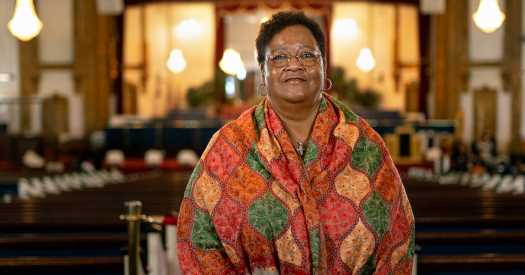Gail Henderson was still reeling from the death of her beloved Shih Tzu, Majesty, last year when her godson announced that he was engaged. Weeks later, he told her he would be moving in with his fiancée and giving up the three-bedroom apartment he and Ms. Henderson had shared for five years.
With no savings and nowhere to go, Ms. Henderson, 64, suddenly found herself on the verge of homelessness. “I didn’t have anywhere to live,” she said.
Her daughter, Ricci, 42, was renting a single room in a house and could not take her in. Her older brothers had died, and most of her other relatives live in Florida.
Ms. Henderson, a retired home health aide, called 311, and was connected with the Center for Independence of the Disabled. The group referred her to Dorot, an organization that provides services to older adults. It is also a beneficiary agency of UJA-Federation of New York, one of the seven organizations supported by The New York Times Neediest Cases Fund.
Dorot helped Ms. Henderson move into a transitional living residence on the Upper West Side and search for permanent housing. After three and a half months, she found an apartment in an assisted-living center in Williamsburg, Brooklyn, but she did not have enough money to pay the first month’s rent.
In October 2018, the Jewish Board of Family and Children’s Services, another beneficiary agency of UJA-Federation of New York, gave Ms. Henderson $1,246 to cover her first month in her new home.
Ms. Henderson has since settled into her spacious one-bedroom apartment. She spends her free time going to the Pleasant Grove Tabernacle Church in Bedford-Stuyvesant. She joined the church in 2005 and serves on the missionary board. “You have to put God first,” Ms. Henderson said. “Everything else will follow.”
Born in the Clinton Hill neighborhood of Brooklyn, Ms. Henderson was the youngest of three siblings and the only girl. Her father was a mechanic and her mother was an X-ray technician, a job that inspired Ms. Henderson to become a home health aide.
When she was young, Ms. Henderson often argued with her mother, who she said favored her older brothers. “I couldn’t do enough to please her,” she said. “I think she wanted more than I was willing to give at that age.”
Eager to escape, Ms. Henderson joined Job Corps, the federal education and vocational program, and went to Cleveland in 1971 to train as a nurse.
She was 16, independent and adventurous, but she lasted only six months away from home. Ms. Henderson said she was kicked out of the program for visiting Chicago without telling anyone.
After moving back in with her parents, she found work as a youth counselor and in the meat department at a Waldbaum’s supermarket.
Ms. Henderson was 22 when she gave birth to her daughter. The pregnancy was unexpected, and she suffered from pre-eclampsia, a condition characterized by dangerously high blood pressure and excess protein in the urine.
“When I had Ricci, I almost died,” she said. “They told my parents to go home and make funeral arrangements.”
Ms. Henderson raised Ricci as a single mother while working full time as a home health aide. She loved helping people and said she approached her job with a positive attitude.
In the 1990s, however, Ms. Henderson became addicted to cocaine. The drug was an escape from her financial and relationship issues, she said. Ricci offered support instead of abandoning her during her battle with substance abuse.
“I always wanted to have that perfect marriage with the white picket fence, the dog, the yard and a driveway,” Ms. Henderson said. “My husband coming home with an attaché case.”
Ms. Henderson said faith and maturity, along with her daughter’s encouragement, put her on a path to sobriety. “You have to get yourself together,” she said. “Get your life back and keep it moving.”
But Ms. Henderson faced another setback in 2001. She was commuting home from work when she slipped and fell as she was about to get off a bus.
Ms. Henderson did not have any immediate pain, but soon her back started to hurt as she worked. She went to a doctor, who told her she had three herniated discs in her lower back.
The injury forced her to retire in 2005, a move that she came to terms with after working for 17 years. But she found herself without an income, and applied for disability insurance.
Ms. Henderson receives a combined $1,485 each month in Social Security Disability Insurance and New York State Supplement Program benefits. She has high blood pressure and vertigo, but manages both with medication.
She is focused on living a comfortable life with no stress, and she said she has made amends with loved ones who have hurt her. She reconciled with her mother before she died in 1991, and she attended her godson’s wedding last year.
“Sometimes,” she said, “God takes us through struggles to make us get close to him.”
Donations to the Neediest Cases may be made online, or with a check or over the phone.
Source: Read Full Article
